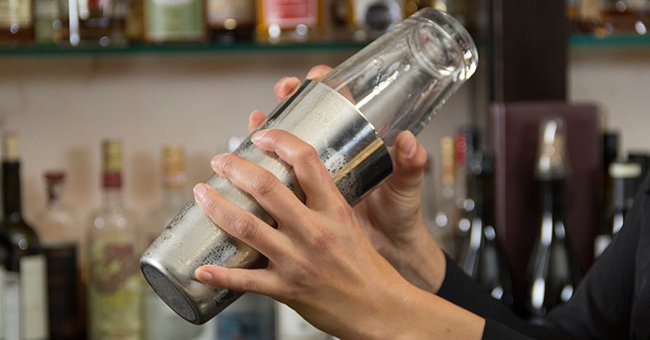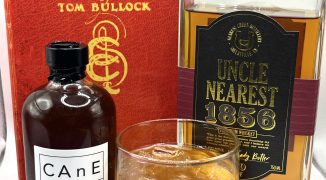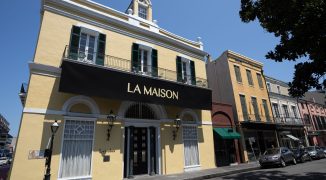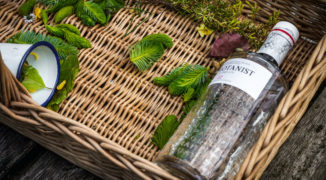The raw egg. Staple of classic cocktails and modern mixology. Largely misunderstood. Certainly misused.
The raw egg is a key part of some amazing cocktails, from classics like the Pisco Sour and the Ramos Gin Fizz to modern interpretations like The Dead Rabbit’s Ale Flip. The addition of egg whites to a drink give a silky smooth texture and mouthfeel with the additional pleasantry of a beautiful frothy head.
That extra layer of texture adds an extra layer of work, however. You see, think of shaking your egg whites like a baker whipping up a meringue. It takes a lot of extra muscle to break the proteins down until a light froth. The longer you shake your drink with ice, the more diluted the drink becomes.
If you crack open a classic cocktail book, it simply recommends pouring all the ingredients and the ice into a shaker and then giving it hell. This leads to foamy, but ultimately weak and watery drinks.
Then along came the dry shake.
“The aim of a dry shake is to whip air into the cocktail to give a foamier, or more mousse-like texture to the drink,” said Tristan Stephenson, author of “The Curious Bartender.” “Whoever invented the dry shake must have recognized that ice is not conducive to awesome foaminess, so they decided to shake without ice first to whip the drink up.”
In other words, you place all your cocktail ingredients along with your egg whites into your shaker first (without ice), shake as hard as possible for about a minute or so, then add the ice, shake again, and serve. Frothy egg whites, less dilution.
There’s a problem, however. You’re still introducing ice into the eggs. The same mechanic that tells us we shouldn’t beat ingredients into egg whites when making soufflé tells us that ice inhibits the foam, said Stephenson. Even with the dry shake, you’re taking all that hard work and breaking down the foam by tossing it around with your ice.
That’s where the reverse dry shake comes in.
The Reverse Dry Shake
“The reverse dry shake solves this by shaking first with ice and then shaking without afterward,” Stephenson said. “I suspect that bartenders might have once worried that the drink warmed up too much by doing it this round (hence the ice shake last) but if you use the same (cold) shaker the effect is negligible.”
Not only that, the reverse dry shake is a double bonus: Because the ice is already strained out of the shaker it means you don’t need to strain the cocktail after the second dry shake.
“The entire contents go into the glass, foam and all,” he said. “It actually becomes a game of not dry shaking too long otherwise you get a drink that is foamy on a comical level.”
I took Stephenson’s advice and tried out the three different shakes on the same cocktail — my personal take on the Ramos Gin Fizz.
Ramos Gin Fizz
-
- 2 oz. gin
- 1 oz. heavy cream
- ½ egg white
- ½ oz. fresh lime juice
- ½ oz. fresh lemon juice
- ½ oz. simple syrup
- 2 dashes orange bitters
- Sparkling rosé to top
- Slice of lemon to garnish
“Standard” Shake
All ingredients except the garnish and the rosé added into a Boston shaker with cubed ice. Shaken vigorously for one minute. Strained through Hawthorne strainer into a chilled champagne coupe. Pour champagne gently down the side of the shaker to loosen up the front, then gently top the drink. Garnish with lemon slice.
Dry Shake
All ingredients except the garnish and rosé added into a Boston shaker. Shaken vigorously for 30 seconds. Cubed ice added, then shaken for another 30 seconds. Strained through Hawthorne strainer into a chilled champagne coupe. Pour champagne gently down the side of the shaker to loosen up the front, then gently top the drink. Garnish with lemon slice.
Reverse Dry Shake
All ingredients except the egg, garnish and rosé added into a Boston shaker with cubed ice. Shaken vigorously for 25 seconds. Used a julep strainer to fish out the ice. Added the egg white, re-seal, and shaken for another 15 seconds. Poured straight into a chilled champagne coupe. Pour champagne gently down the side of the shaker to loosen up the front, then gently top the drink. Garnish with lemon slice.
The results:
 From left to right, a comparison of egg white cocktails made with a traditional shake, a dry shake, and a reverse dry shake. Looking closely, you can see that the reverse shake yields the firmest, most meringue-like foam.
From left to right, a comparison of egg white cocktails made with a traditional shake, a dry shake, and a reverse dry shake. Looking closely, you can see that the reverse shake yields the firmest, most meringue-like foam.
Comparing the three shake styles side-by-side, you can clearly see each foam firms up and becomes more voluminous. The reverse dry shake creates the closest thing to a meringue.





